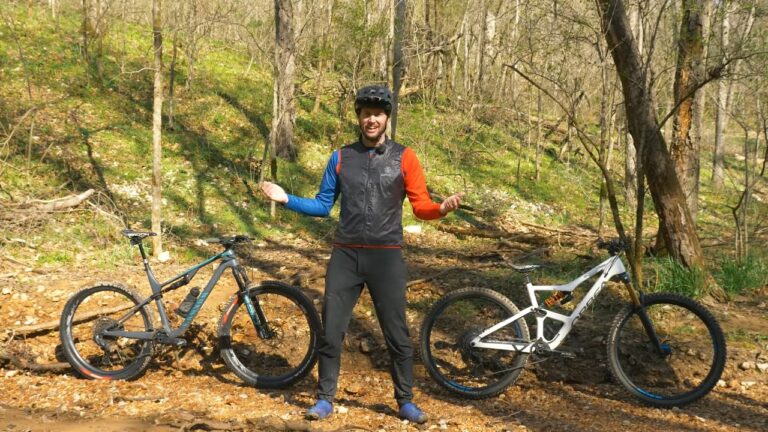In the world of mountain biking, there are two main types of bikes that people use: cross-country (XC) bikes and trail bikes. Both have their own distinct advantages and disadvantages, so it really depends on what kind of riding you want to do as to which one is better for you.
Cross-country bikes are designed for riders who want to go fast and cover a lot of ground. They are generally lighter weight than trail bikes, with slimmer tires that provide less traction and suspension that is less robust.
However, this also makes them more nimble and easier to handle on technical terrain. Trail bikes, on the other hand, are designed for riders who want to take on tougher terrain. They are heavier than XC bikes and have wider tires with more aggressive tread patterns for better traction. They also have more robust suspension systems to absorb the impact of riding on rougher trails.
XC vs Trail Bike
The main difference between a cross-country (XC) bike and a trail bike is the amount of suspension travel they have. XC bikes typically have around 100mm of suspension travel, while trail bikes have 120-140mm.
This extra suspension travel makes trail bikes better suited for tackling more technical terrain, such as rocky descents or root-filled singletrack. However, it also makes them heavier and a bit less efficient on smooth trails.
XC vs Trail Hardtail
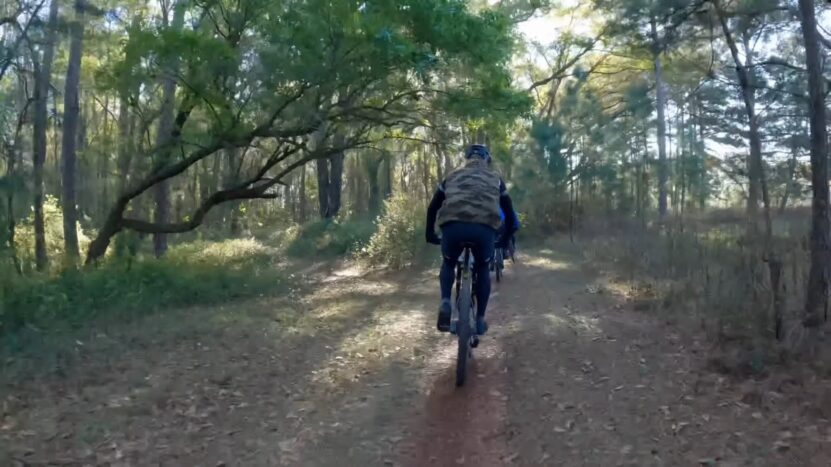
The main difference between a cross-country (XC) hardtail and a trail hardtail is the geometry. A cross-country hardtail has a more upright geometry that is better suited for pedaling efficiency, while a trail hardtail has a slacker geometry that is better suited for descending.
Another difference between the two is the suspension. A cross-country hardtail will have less suspension travel than a trail hardtail, which is better suited for smooth trails. A trail hardtail will have more suspension travel and is better suited for rough trails.
Frame
- XC bikes are designed with a steeper head angle and shorter wheelbase for quicker handling.
- Trail bikes have a slacker head angle and longer wheelbase for more stability.
Handlebars
- XC bikes have narrower handlebars for better aerodynamics.
- Trail bikes have wider handlebars for more control.
Fork/Suspension
- XC bikes have lighter forks with less travel.
- Trail bikes have heavier forks with more travel.
Tire
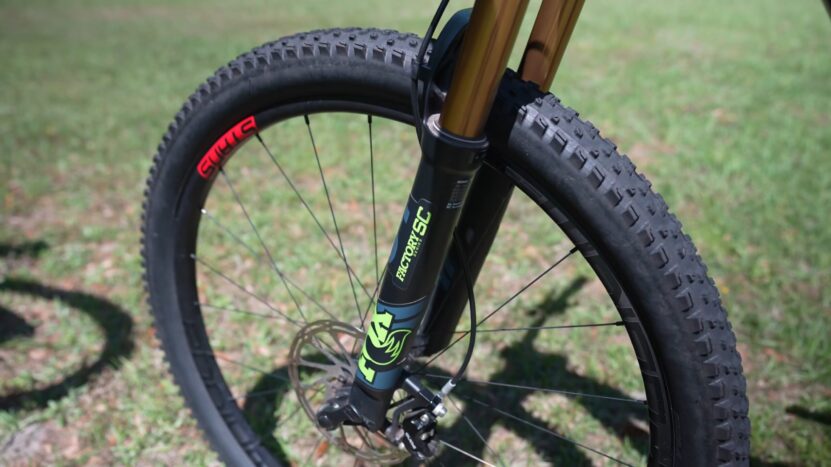
- XC bikes have narrower tires for faster rolling.
- Trail bikes have wider tires for better grip.
Wheels
- XC bikes typically have lighter wheels for easier acceleration.
- Trail bike wheels are heavier for durability.
Tyers
- The majority of XC bike tires are tubeless.
- Trail bike tires can be either tubeless or with tubes.
An XC bike is designed for fast and efficient cross-country riding, while a trail bike is designed for more technical terrain with obstacles such as rocks and roots.
Seatpost

- XC bikes have dropper seatposts for quick and easy height adjustments on the fly.
- Trail bikes have rigid seatposts for increased climbing efficiency.
Weight
- XC bikes are typically lighter than trail bikes because they are designed for less rugged terrain.
- XC bikes are designed for speed and efficiency on relatively smooth cross-country trails, while trail bikes are designed for more technical terrain with obstacles such as rocks and roots.
- XC bikes typically have lighter components, narrower tires, and a more aerodynamic frame design, while trail bikes tend to have heavier components, wider tires, and a more rugged frame design.
Brakes Difference
- XC bikes typically have lighter and more powerful brakes for faster stopping.
- Trail bikes have heavier and more durable brakes for more control on descents.
Drivetrain Difference
- XC bikes typically have a higher gear range for easier climbing.
- Trail bikes have a lower gear range for more control on descents.
What’s The Difference?
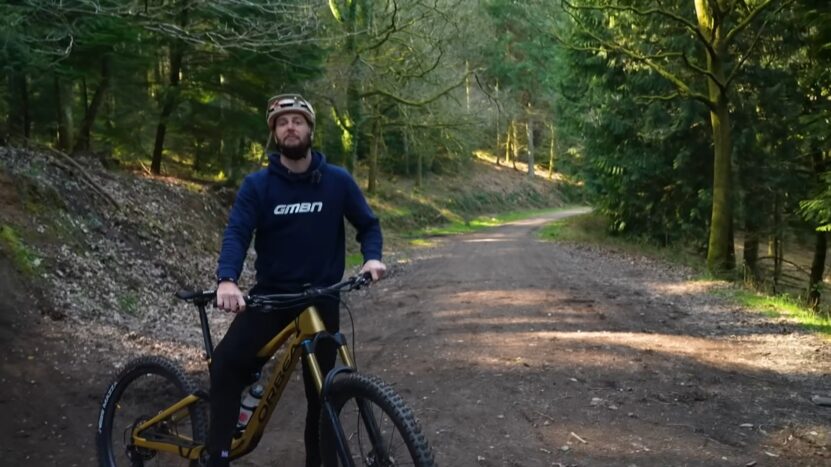
The biggest difference between XC and trail bikes is the amount of suspension travel they have. XC bikes typically have 80-100mm of suspension travel, while trail bikes have 120-140mm. This extra travel makes trail bikes better suited for riding on rougher terrain, as it helps to absorb bumps and drops.
Another key difference is that trail bikes tend to have wider tires than XC bikes, which gives them more traction and stability on loose or slippery surfaces. Finally, trail bikes usually have a few more gears than XC bikes, as they need to be able to handle steeper hills.
Do I Want an XC Or Trail Bike?
XC bikes are built for speed and efficiency on smooth terrain. They are generally lightweight with less suspension travel than a trail bike.
Trail bikes are versatile and can be ridden on a variety of terrain. They have more suspension travel than an XC bike, making them more comfortable on rough trails. Trail bikes also tend to be heavier than XC bikes.
Can I Ride Trails On An XC Bike?
Yes, you can ride trails on an XC bike. XC bikes are designed for cross-country riding, which generally means smoother, less technical trails.
They tend to have less suspension travel than trail bikes, and their geometry is designed more for efficiency than comfort. This means that they’re not necessarily the best choice for riding rough, technical trails.
What Is an XC Bike Good For?
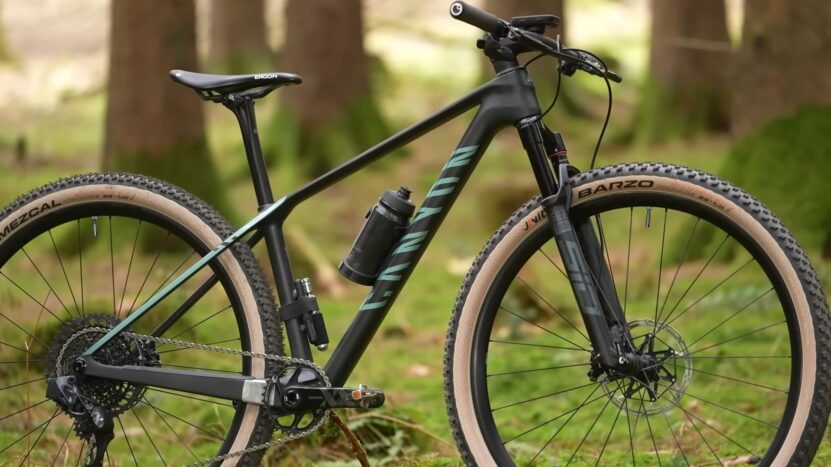
An XC bike is good for riding on cross-country terrain. This includes trails with a mix of climbs and descents, as well as some technical features.
XC bikes typically have 100-120mm of suspension travel, making them efficient pedaling machines that can still take on some challenging terrain.
How Do I Make My Trail Bike More XC?
One way to make your trail bike more XC is to lighten it up. This can be done by removing any unnecessary weight, such as switching to lighter tires or components. You’ll also want to make sure your bike is well-tuned and in good working order.
Another way to make your trail bike more XC is to adjust your riding style. Instead of plowing through rough terrain, try to finesse your way around obstacles. This will help you conserve energy and keep your momentum up.
Finally, make sure to train specifically for XC racing by incorporating hill repeats and other XC-specific workouts into your training plan.
What’s The Difference Between XC And Enduro?
XC or cross-country bikes are designed for speed and efficiency on relatively smooth trails. They typically have narrower tires, lighter frames, and suspensions that are less robust than what you would find on an enduro bike.
The result is a bike that is easier to pedal and quicker to accelerate but may not be as comfortable or confident on more technical terrain. Enduro bikes, on the other hand, are designed with more aggressive riding in mind. These bikes have wider tires and more suspension travel to help navigate rougher trails.
They also tend to have stronger components to handle the increased abuse that comes with more aggressive riding. As a result, enduro bikes are typically heavier and more difficult to pedal but offer more confidence and comfort on technical terrain.
What Is the XC Trail?
XC stands for cross-country, and XC trail bikes are designed for riding on a variety of terrain.
They’re generally lighter weight than other mountain bike styles, with slacker angles and fewer features. XC bikes are often used for racing, but they can also be great for everyday riding on singletrack trails.
What Is The Difference Between Trail and All-Mountain Bike?
The main difference between a trail bike and an all-mountain bike is that a trail bike is designed to be ridden on trails, while an all-mountain bike is designed to be ridden both on and off trails.
Trail bikes are typically lighter weight than all mountain bikes, and they have less suspension travel. All-mountain bikes, on the other hand, are designed to handle more challenging terrain, and they have more suspension travel.
Trail bikes are a versatile category of mountain bike that sits between cross-country and all-mountain bikes in terms of both suspension travel and geometry. Trail bikes usually have between 4″/100mm and 5.5″/140mm of suspension travel, and head angles somewhere in the 67°- 69° range.
This makes them more agile and nimble than all-mountain bikes, but still able to handle rough terrain. They are a good choice for riders who want a bike that can do it all, without being specialized in any one area.
What is Trail Mountain Biking?
Mountain biking on trails is a great way to get exercise and enjoy the outdoors. It can be done on any type of bike but is most commonly done on a mountain bike with specialized tires and suspension.
Mountain biking on trails can be a great workout and is also a lot of fun. There are many different types of trails, so it is important to find one that is suitable for your skill level.
Beginner trails are usually wide and have gentle slopes, while more advanced trails may be narrower and have steeper sections. There are also trails specifically designed for mountain biking, which usually have jumps and other features.
What is a Trail Hardtail?
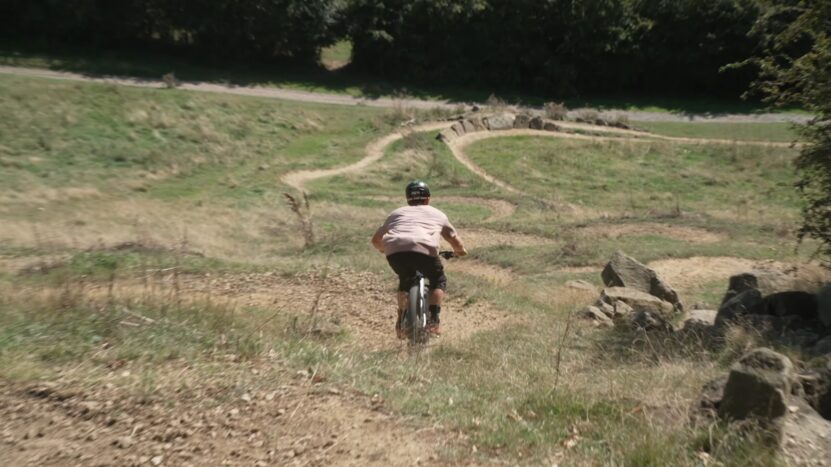
A trail hardtail is a mountain bike with a suspension fork and a hardtail frame. Hardtails are typically lighter-weight and more affordable than full-suspension bikes, making them a popular choice for cross-country and trail riding.
Many modern hardtails feature 29″ wheels, which offer increased traction and stability on rough terrain.
Is 100mm Fork Travel Enough?
This is a question that gets asked a lot, and it really depends on what you’re looking for in a bike. If you’re mostly riding on smooth trails, then 100mm of travel may be plenty.
However, if you’re doing more aggressive riding or hitting some rougher trails, then you might want to consider a fork with more travel. It really comes down to personal preference and the type of riding you’ll be doing most often.
What Is A Trail Dirt Bike?
A trail dirt bike is a motorcycle designed for off-road riding on trails and other unpaved surfaces.
They typically have longer suspension travel than other types of motorcycles, and they are often equipped with knobby tires and feature powerful engines. Trail dirt bikes are popular among riders who enjoy exploring remote, rugged areas.
What is an Enduro Bike?
Enduro bikes are designed to take on the most challenging mountain bike trails. They are usually equipped with wide tires and suspension forks to absorb the bumps and obstacles you encounter on the trail.
Enduro bikes tend to be heavier than other types of mountain bikes, but they are built to handle the rigors of off-road riding.
What Are Downhill Bikes For?
Downhill bikes are made for riding on rough, mountainous terrain. They typically have long suspension travel and are designed to be ridden hard and fast. They are often heavier and burlier than other types of mountain bikes, which makes them better suited for taking on steep and technical trails.
What is Down Country MTB?
Down-country mountain biking is a relatively new and exciting discipline that encompasses both cross-country and enduro riding. Down-country courses are typically longer and more technical than traditional cross-country trails, but not as extreme as dedicated enduro stages.
This makes down the country the perfect middle ground for riders who want to push their limits without having to commit to an all-out enduro race. Down country races typically consist of multiple stages, each with its own start and finish line.
Riders are timed on each stage and the rider with the fastest overall time is declared the winner. This format allows riders to focus on their own performance and limits, rather than worrying about beating other riders.
Conclusion
We can see that mountain biking can be a great workout and is also a lot of fun. There are many different types of trails, so it is important to find one that is suitable for your skill level.
Beginner trails are usually wide and have gentle slopes, while more advanced trails may be narrower and have steeper sections. There are also trails specifically designed for mountain biking, which usually have jumps and other features.

